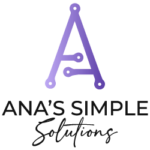As a business owner, you know that effective client communication is key to success and shows professionalism. But what exactly does it mean to communicate effectively with your clients?
In this blog, we will delve into the ins and outs of client communication and explore why it is so important for your business. From building rapport and transparency to understanding timelines and needs, we will cover all the essential aspects of effective client communication. Additionally, we will provide you with five best practices that you can implement right away to improve your client communication skills.
We will also discuss how to choose the right communication tools for your business and highlight common mistakes to avoid. Get ready to master client communication and take your business to new heights!

What is effective client communication?
Effective client communication is all about listening well and sharing clear, easy-to-understand messages. It’s about checking in often and sharing updates to keep your clients in the loop. Building trust with honesty and openness is really important too.
To communicate effectively, you also need to pay special attention to your client’s needs and try to answer their questions before they even ask them. It’s about being clear about what each party should expect from each other and treating each other with respect.
Simply put, effective client communication is a vital part of building strong, successful relationships with your clients. It helps everyone work together better and can lead to long-lasting business partnerships with a personal touch.
Why is client communication important?
Good client communication is like the glue that holds everything together. It builds trust and helps create strong relationships. By clearly explaining your services, costs, and what you expect, you can avoid confusion and disagreements down the line.
Not communicating well can hurt your business. It can give you a bad reputation and you could lose out on business opportunities. But when you communicate well, you show your clients that there are real, caring people behind your brand. It also helps you to stand out as an expert in your field
How good communication builds rapport with clients?
Making strong connections with your clients is key to building rapport and establishing trust with your clients.
This is the heart of great client communication. Keep the lines of communication open, honest, and understanding. This can take your client relationships to the next level. Think of ways that you can do that within your team by exemplifying this for them.
Listen carefully and approach every situation with curiosity. Show your clients you care. This can help you connect on a deeper level with them. In the case of verbal communication, make sure you let them know you are listening by not interrupting, pausing after they speak before you speak, and repeating a bit back about what they’ve said.
Always use simple, clear language and a pleasant tone of voice. There is nothing more aggravating to someone than acronyms or big words that may be somewhat ambiguous to your clients. This will ensure everyone understands each other and helps to prevent misunderstandings throughout your work with them.
Regularly updating your clients is important too. Making sure they don’t have to chase after you for an answer, or to know where their project is, is always a benefit. They will remember how easy you were to work with and be forgiving when things happen that may cause delays.
Otherwise, always make sure you’re meeting their needs. Strong client relationships don’t just bring satisfaction. They can also lead to recommendations and long-term success for your business.

Transparency in communication
Being open and honest is a big part of good client communication. Sometimes it feels more difficult to do this, especially if there are issues within the work you are doing, but the only way to solve these issues is to bring them to light. That is a good thing.
When you’re open and honest, it shows you’re professional. It builds trust with your clients. If this is something you may find difficult, or don’t quite know how to emphasize, the following tips may help.
- Talk with clients in a clear and straightforward way. Don’t hide meanings or be ambiguous. Say what you mean clearly and directly. Avoiding any confusion or hidden meanings is key.
- Manage expectations and avoid confusion. Give regular updates to make sure everyone knows what’s going on. This is how you keep communication clear and open.
- Ask for Feedback: Encourage clients to share their thoughts and concerns. This helps keep communication open and can provide valuable insight into how you can improve your services.
- Admit Mistakes: If something goes wrong, admit it. Apologize and explain how you plan to fix it. From the client’s perspective, it shows you’re accountable and committed to making things right.
- Respond to requests in a timely manner. It’s okay if you can’t get back to clients immediately, but let them know that you will review all messages at the end of the day and will respond the next morning or something of that nature.
Doing this can help you build strong, lasting relationships with clients. It can also stop small problems from turning into big arguments.
To put it simply, being clear and open in your communication can bring better results and long-term success.
Understanding the client’s timeline and needs
Understanding your client’s needs and timeline is a key factor in ensuring effective client communication.
One of the first things I do when working with a client is ask about what they have going on in their business, what are their goals… what are they trying to achieve in the near and far term. Understanding this context will help you understand why they need your help (in whatever it is you are helping them with) and why it is important to them.
Listening closely to what they say and asking questions can give you a good idea of what they’re hoping to achieve as well. This information helps you tailor your services to fit their specific needs.
In regards to the timeline for the project, it is important to always communicate any changes that happen in this timeline as quickly as possible to the client. Many times this may be caused by the client themselves, but they will show much appreciation and trust in you if that is brought to their attention early and often.
Lastly, be open to feedback and be ready to make changes if needed. This shows you’re professional and committed to making your clients happy. This doesn’t mean spin on a dime if they ask, it means you can be flexible to accommodate “realistic” changes.
How to avoid jargon and provide clarity in client communication
Clear and to-the-point communication can’t be overstated. It’s a big part of building strong relationships with your clients and making sure they’re happy. When you use business jargon or slang it can be confusing and ambiguous as we mentioned above.
Be open to any potential problems or delays. (see my comment about client timelines!)
Use visuals, like flowcharts or data visualization for complicated information. This is a better way to help clients understand numbers or metrics especially if your deliverables depend on them.
Regularly check in with your clients and give updates. This shows you’re committed to being open and professional and avoiding any miscommunication when possible.
Following these steps can bring better results, help you build a good relationship with your clients, and avoid any misunderstandings.

The role of self-awareness and empathy in client communication
Good client communication is important in building strong relationships and making clients happy. Self-awareness plays a big part in this.
Knowing how you communicate, including your strengths and areas to improve, is crucial. This can help you change your approach to fit each client’s needs better.
Use active listening and ask the right questions as a first step, always trying to see things from your client’s point of view. This shows you have mutual respect for the client and their point of view.
Communicate clearly and professionally. Be self-aware and avoid industry jargon or phrases that could confuse your client.
The way you speak and the methods you choose to communicate, like email or phone calls, can also make a big difference. Being self-aware here is key.
By being self-aware in your communication, you can respect each other better, avoid misunderstandings, and create long-lasting business relationships.

Best practices for effective client communication
Setting clear expectations
Your first few meetings with a client can be exciting, creating a new project is always fun, but it is also the best time to set clear expectations on when and how your company works on its projects.
This is when you A.) establish a clear line of communication by articulating project goals, timelines, and deliverables and B.) establish a communication cadence and communication methods with the client.
This builds trust and ensures transparency from the start.
Some create a “how we work” or “Welcome” packet for their client and go through it in their initial onboarding to make sure that days off are communicated, and any policies regarding how and when to ask questions or request updates. If you don’t have this yet, it may be something you should think about creating as your business grows.
Also, clarify when and how you will update them on progress regularly to ease any questions.
Using client feedback to improve communication
Client feedback is key to getting better at client communication. Make sure there are ways for your clients to share their thoughts, like check-ins or surveys. Listen to this feedback carefully to improve how you communicate. Also, give your clients regular updates on how you are improving your own communication to keep them involved. Using your client’s feedback can help you build stronger relationships and get better results over time.
Choosing the right communication tools for your business
Picking the right communication tools for your business is as important as communication itself.
Are you going to use Virtual Meetings? The Phone? Email?
It’s important to pick something that works for your clients, but it is also important to pick something that works well for you. I encourage you to pick something simple and streamlined and even give the clients quick training on it as part of their onboarding process.
Making sure your tools allow you to establish clarity (as in video chat) or progress (perhaps a dashboard from a project management tool) will make everyone’s job easier and more effective.
I am a personal fan of ClickUp and Airtable to share information with clients.
👉👉 Check out my YouTube on Communicating using ClickUp 👈👈
Remember, it’s all about making it seem EASY for the client to understand and be able to feel good about the relationship, so think about how that would best work for you and your team.
Effective client communication software and quick chats
If this is a method that you’d like to offer your clients, make sure you are clear on your response time, and how they should request changes or voice concerns. Nothing throws a business into disarray like an unhappy client who can’t quite tell you what it is they are upset about.
Common mistakes to avoid in client communication
In the realm of client communication, a crucial aspect of running a successful business is ensuring effective and professional interactions and a high level of customer service with your clients.
One of the most prevalent mistakes is poor listening skills. Make sure you are treating them the way you’d like to be treated and don’t assume you understand what they are speaking about until you have the full context, even if it is a difficult conversation.
Not utilizing clear and concise language is also a mistake. Avoid jargon and acronyms that might only confuse your clients. Using simple words and providing relevant information, you can ensure that your messages resonate.
Another mistake to steer clear of is overpromising and under-delivering. Setting realistic expectations and delivering on them are integral to cultivating this trust, paving the way for long-term success. Additionally, diligently following up with clients proves your commitment to their satisfaction and is the best way to show that you value their business. Furthermore, actively seeking feedback is a surefire way to demonstrate your dedication to improvement and meet the evolving needs of your clients.
Frequently Asked Questions
What is the key to effective communication with clients?
Active listening is crucial for effective communication with clients. Understand their needs by asking open-ended questions. Use clear language, avoid jargon, and provide regular updates. Be responsive and timely in all forms of communication.
Why is communication in project management important?
Effective communication is essential in project management to ensure alignment among team members. It helps prevent misunderstandings and delays, while frequent updates and progress reports build client trust. Open communication channels facilitate feedback and allow for timely adjustments throughout the project.
Is it necessary to have all of these tools in order to be an effective communicator?
No, it’s not essential to possess all the mentioned tools to be an effective communicator. Understanding your client’s requirements and preferences is crucial. Select the tools that suit both you and your clients, such as email, phone calls, or video conferencing. Consistency and clarity in communication matter more than having the latest tools.


